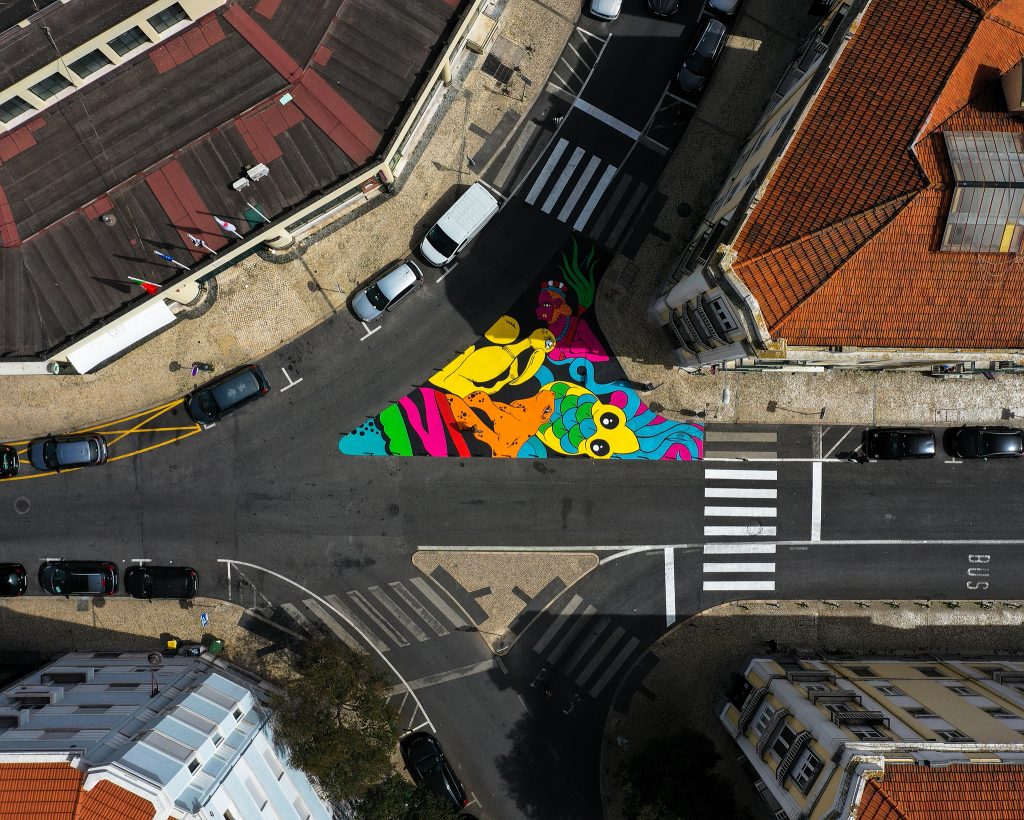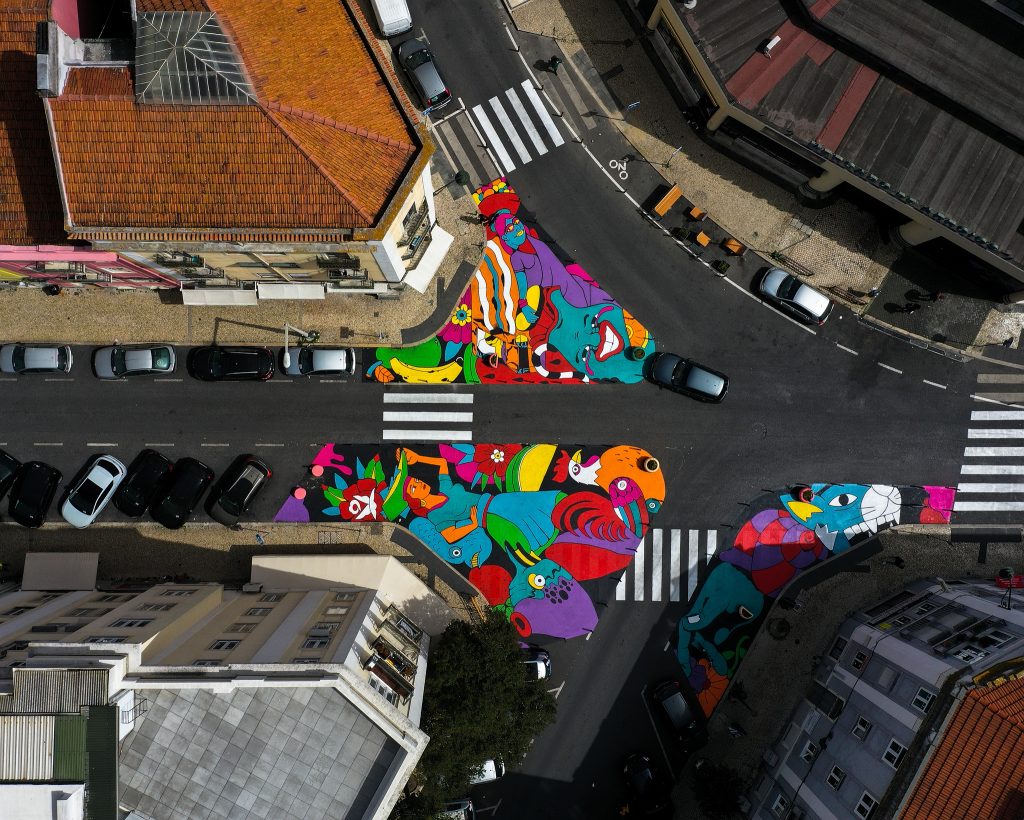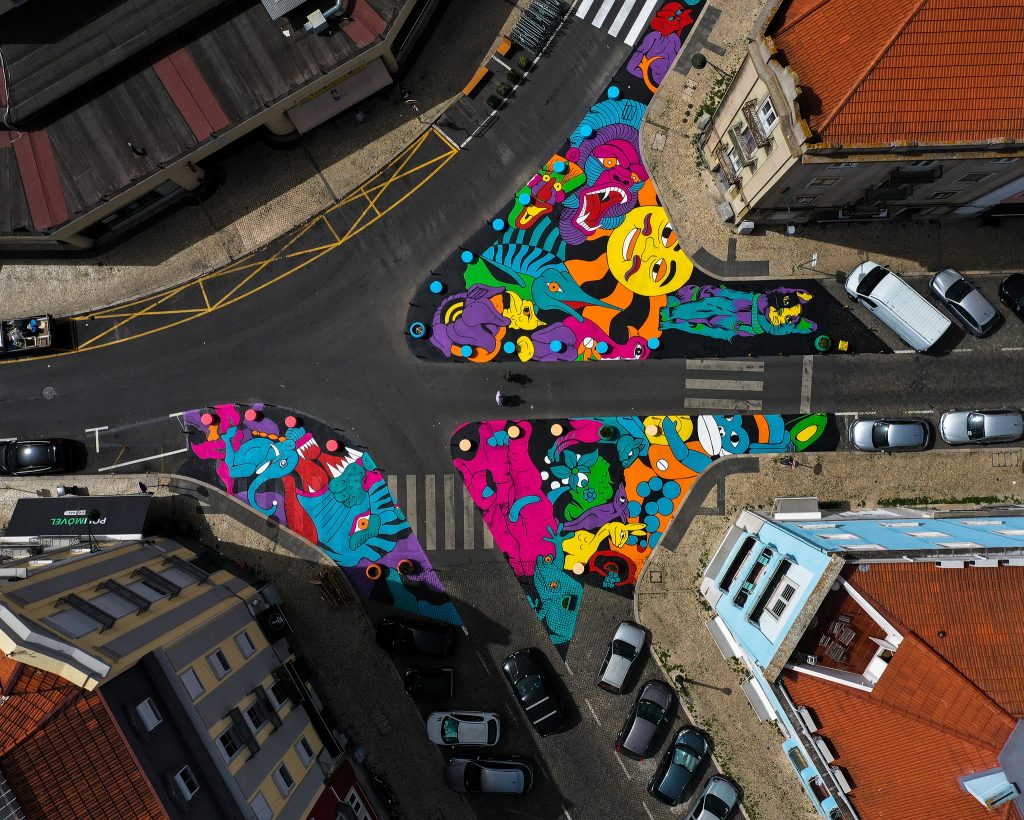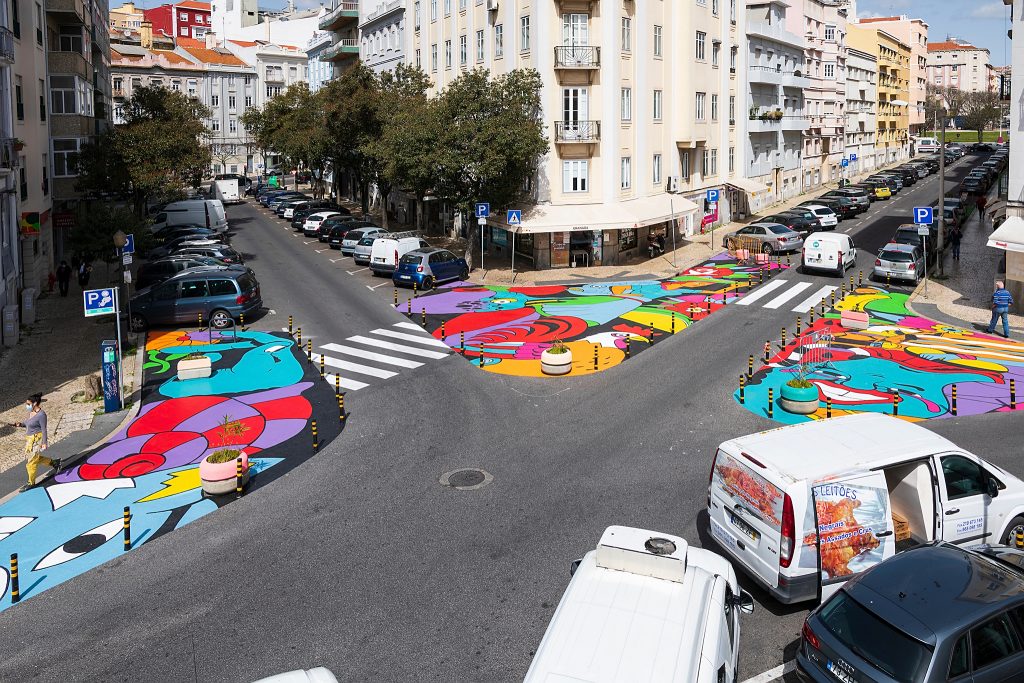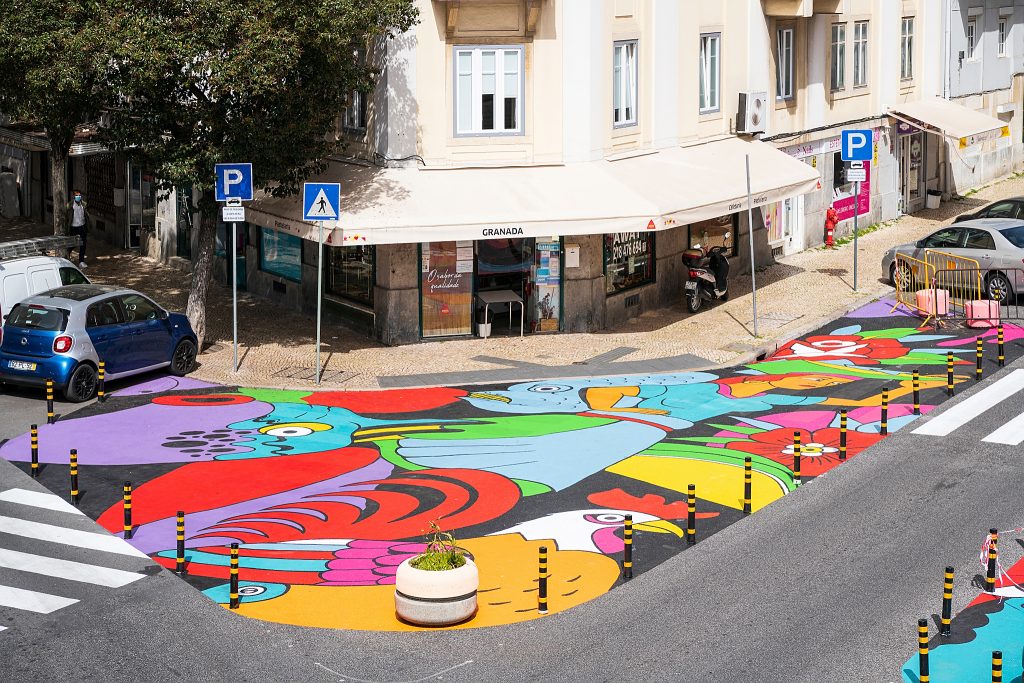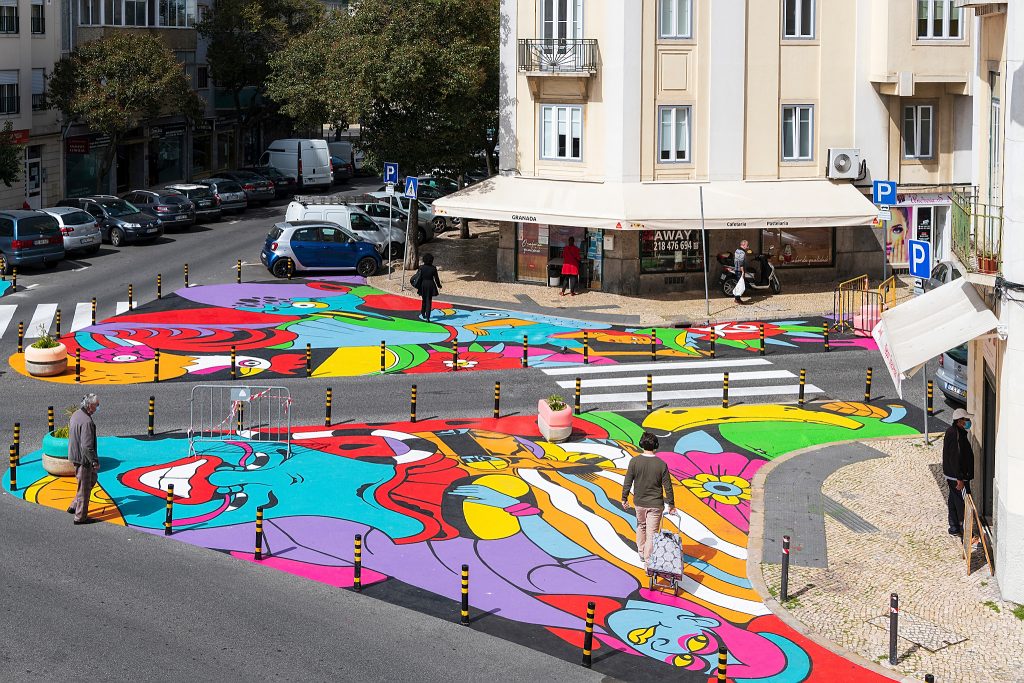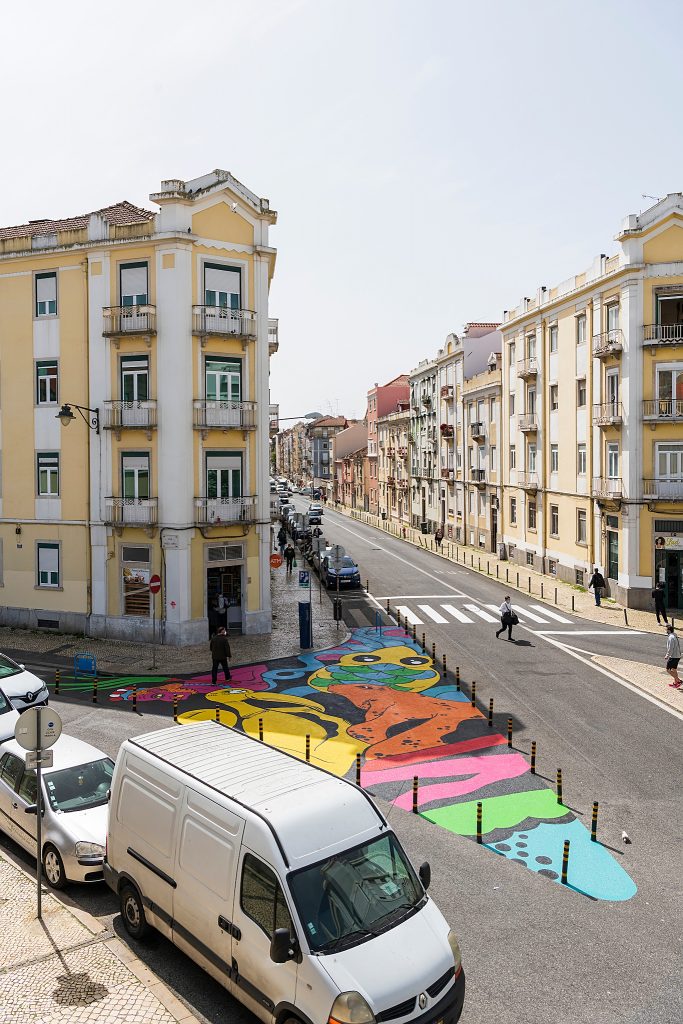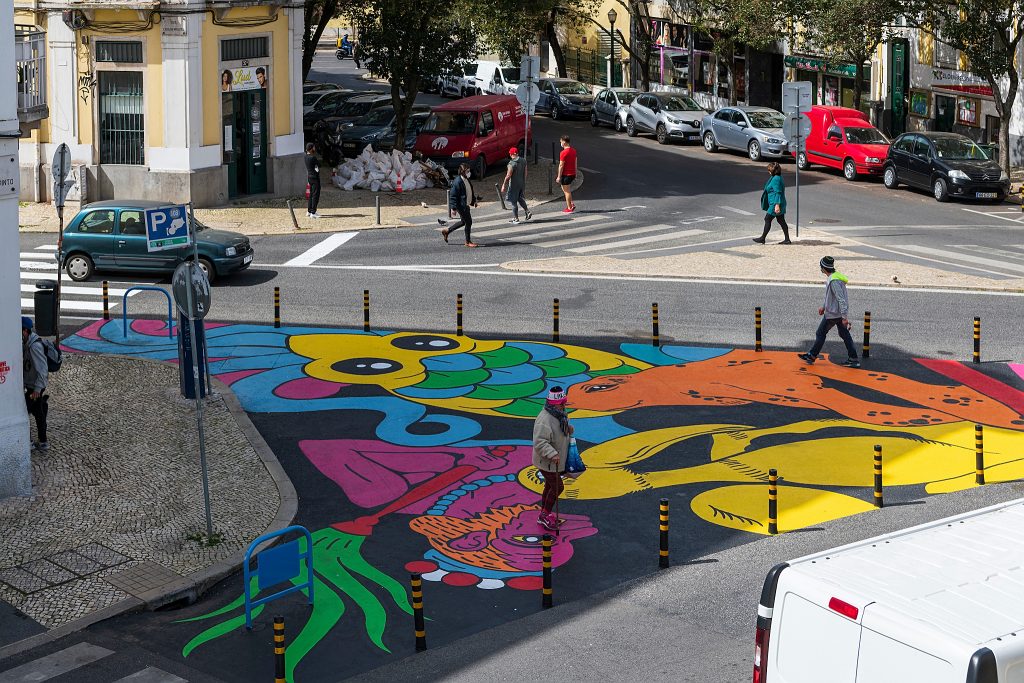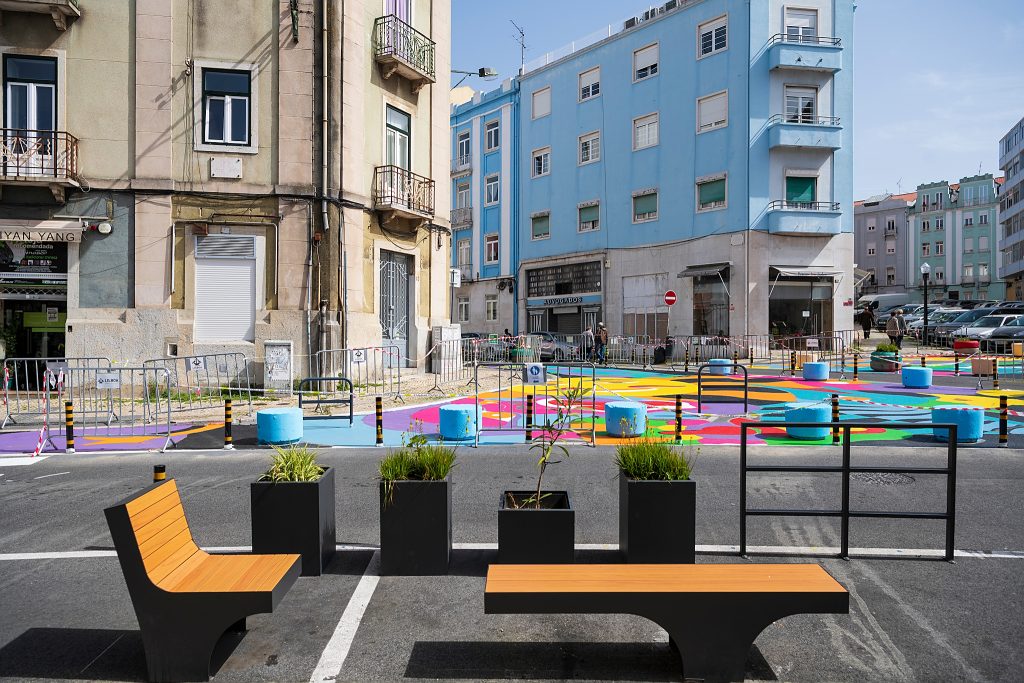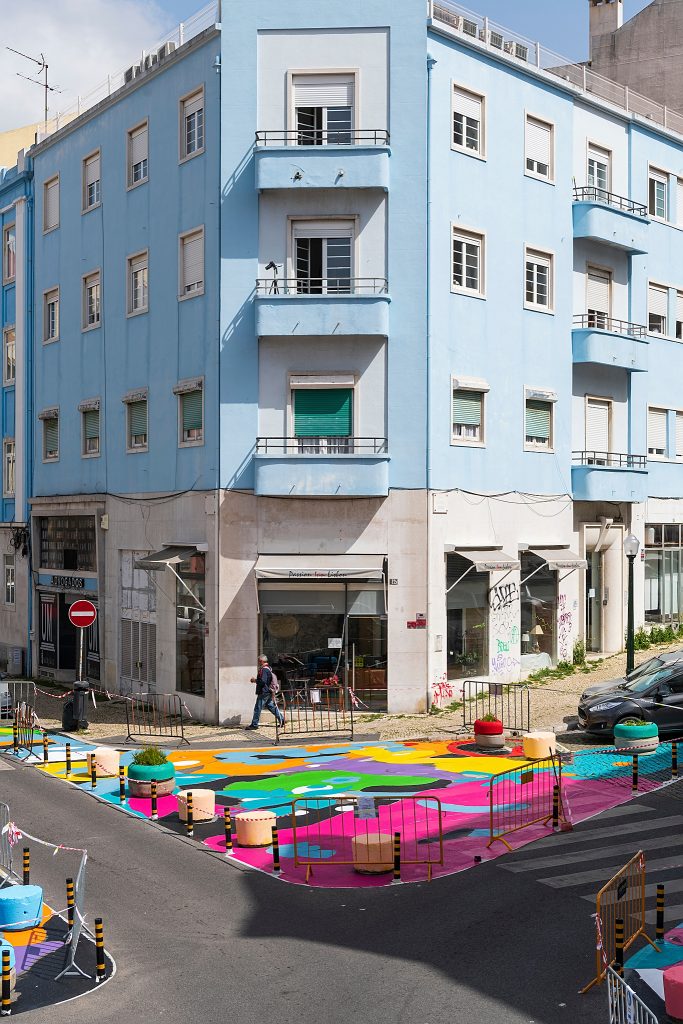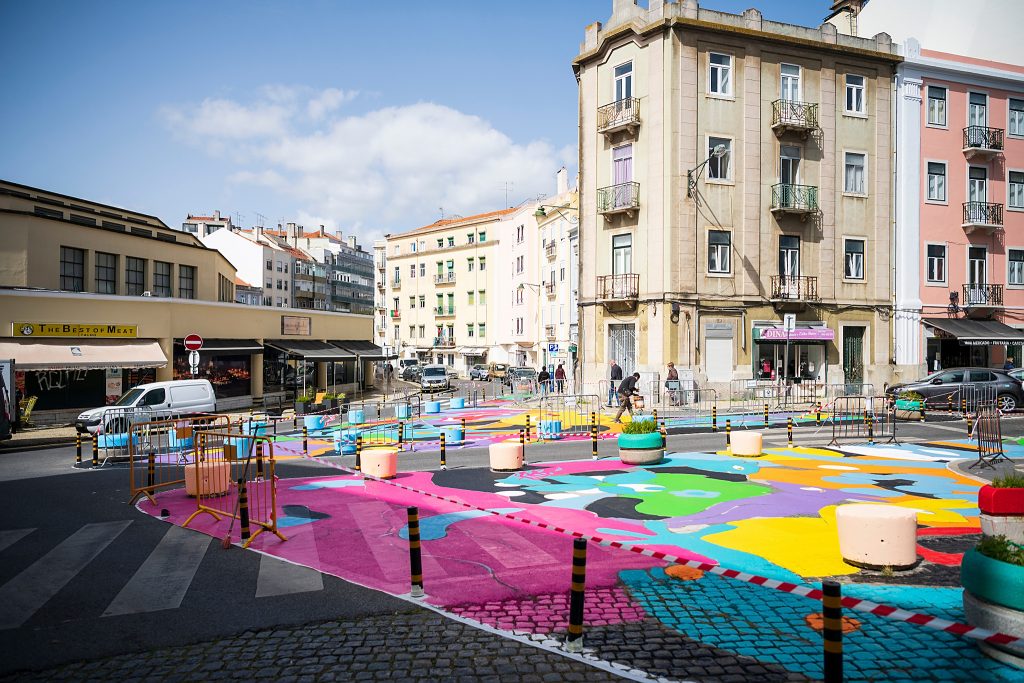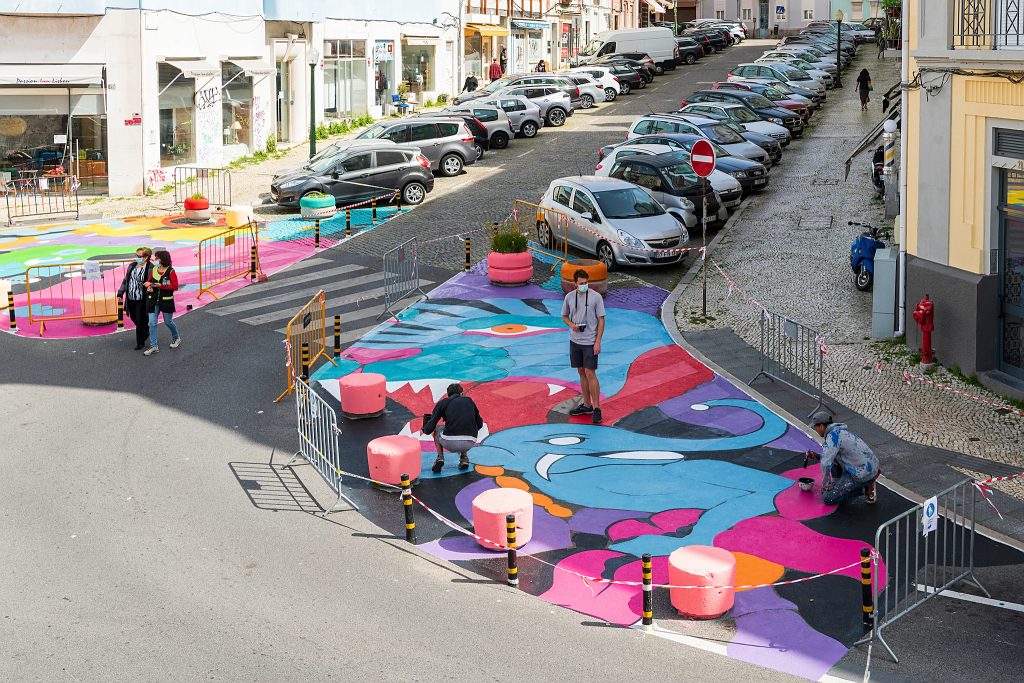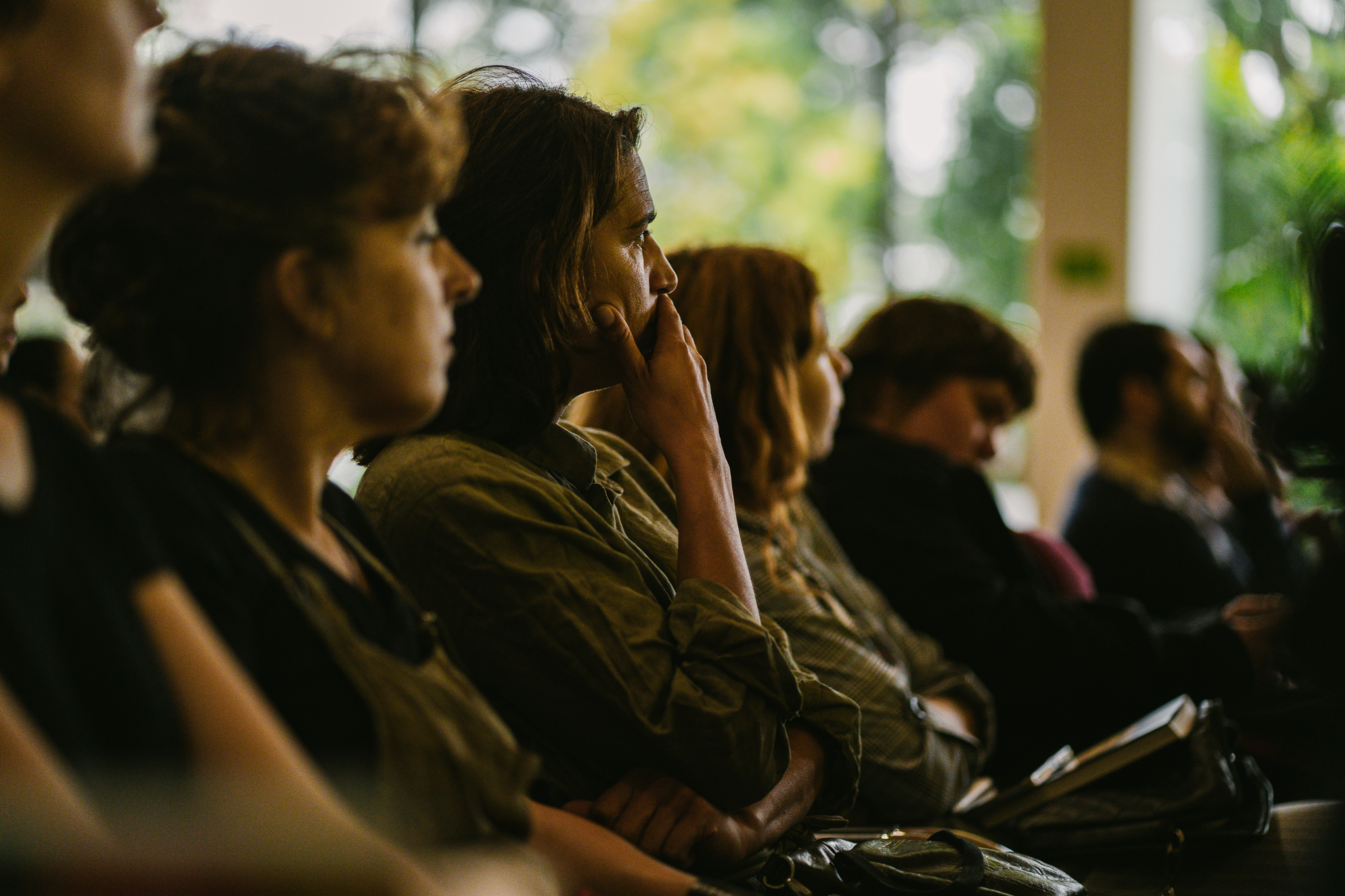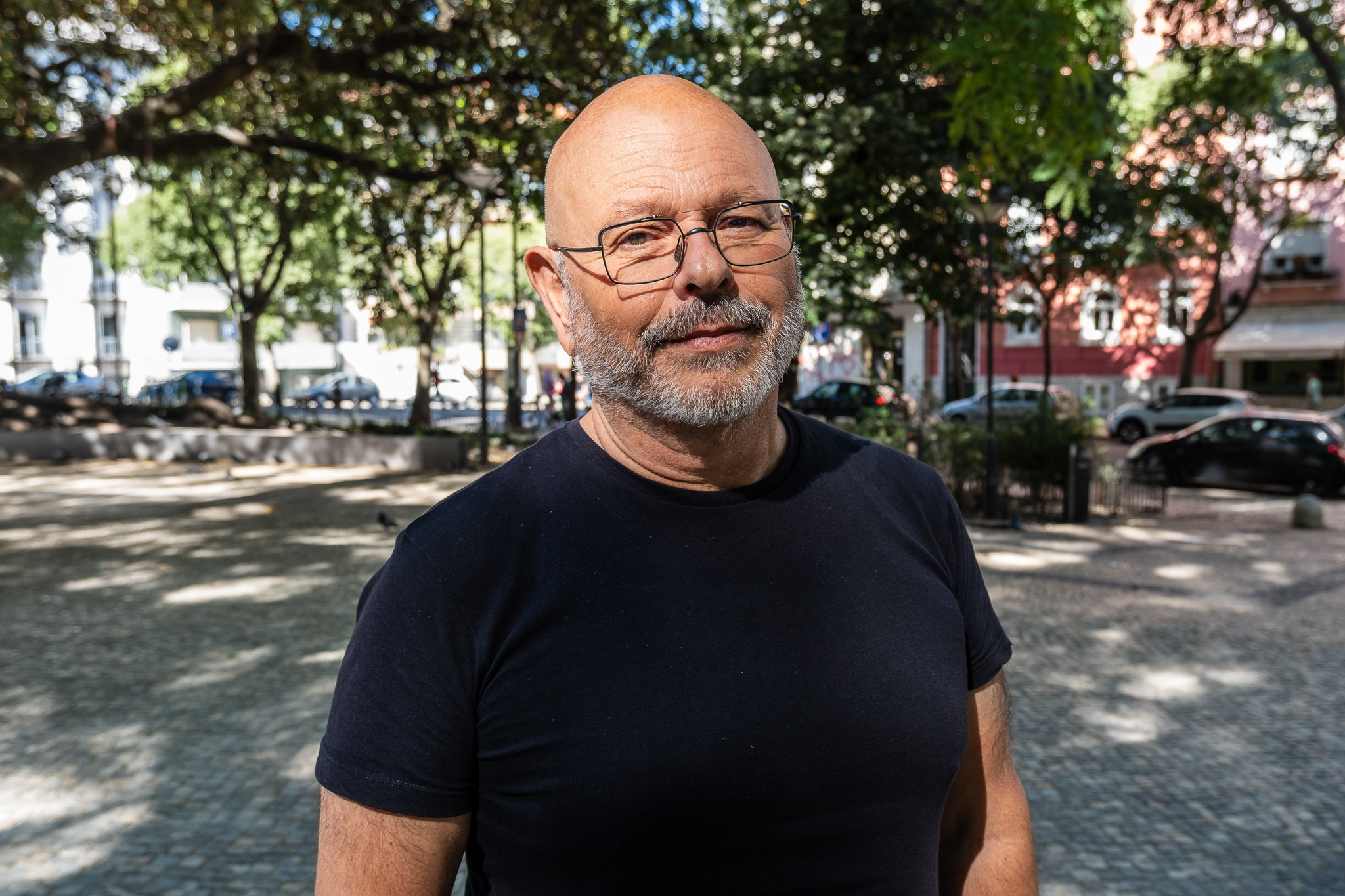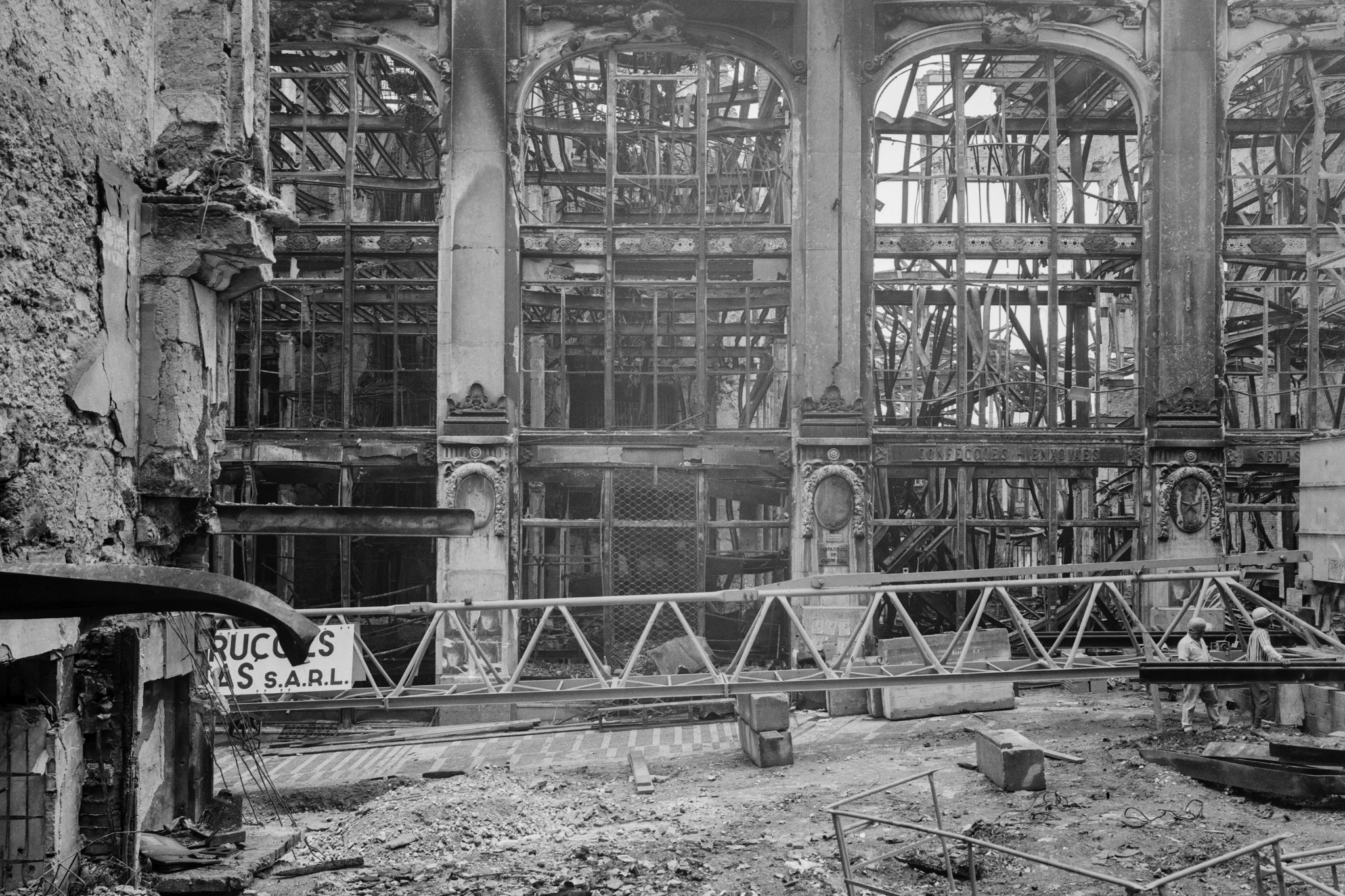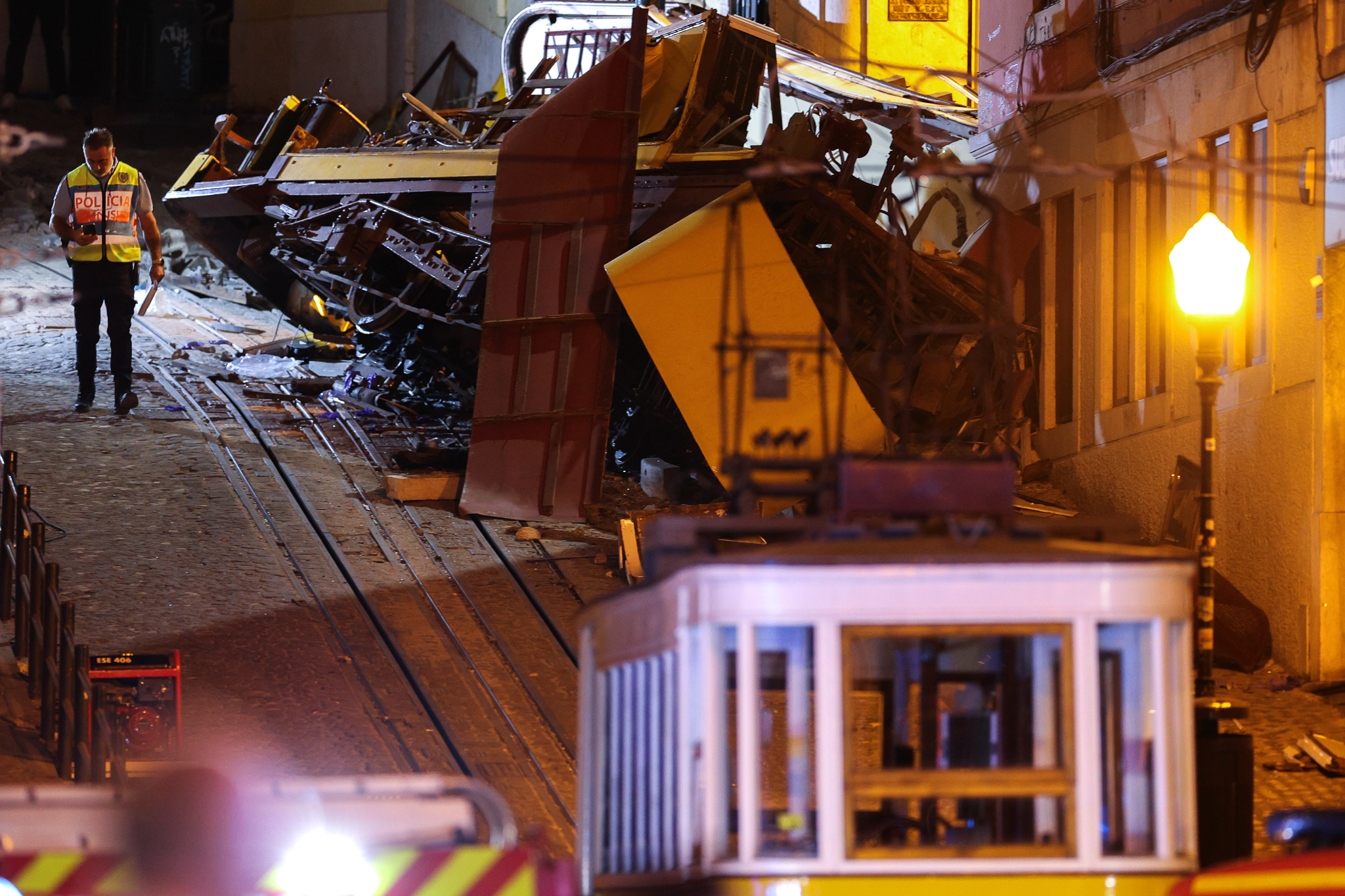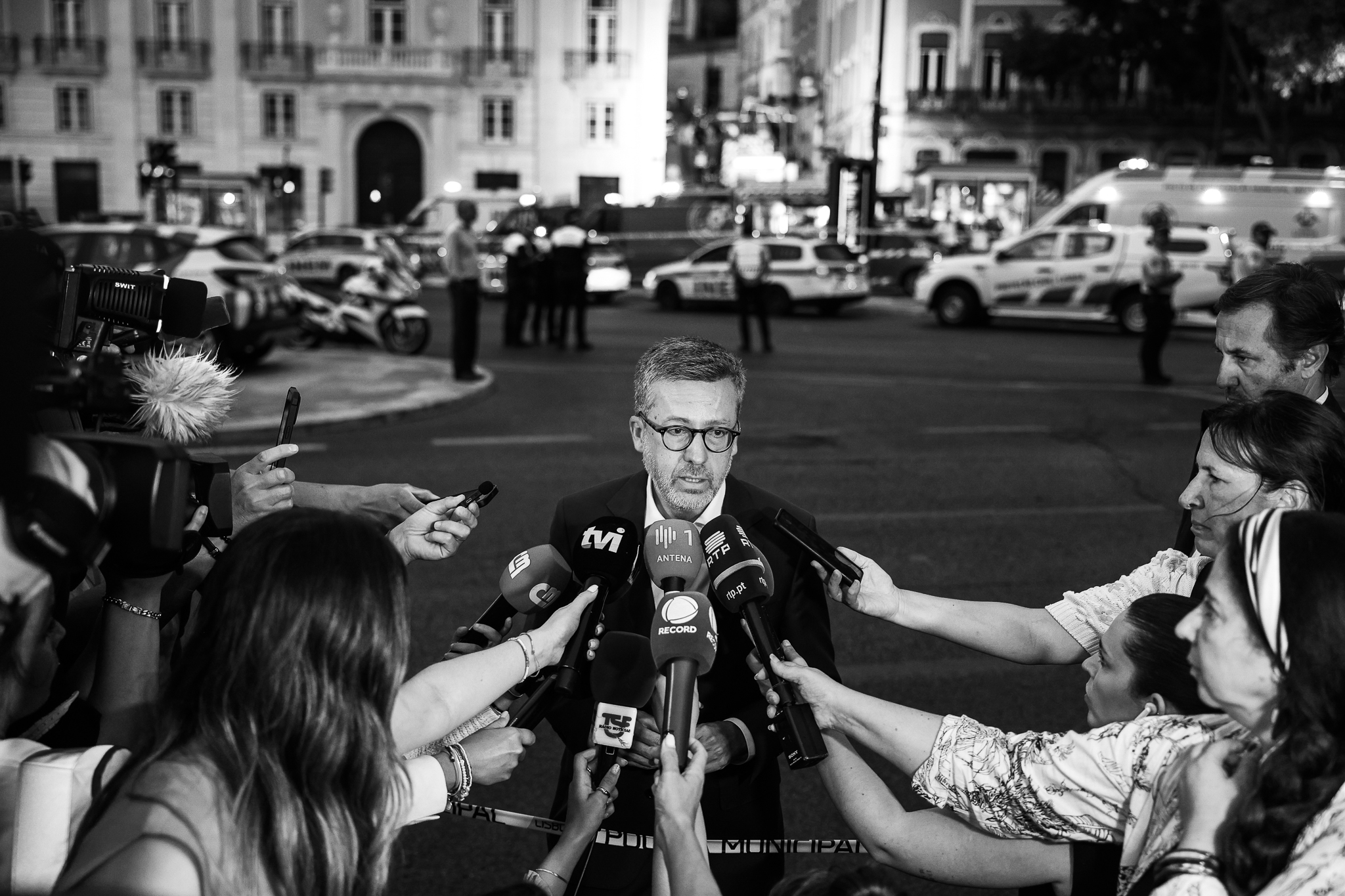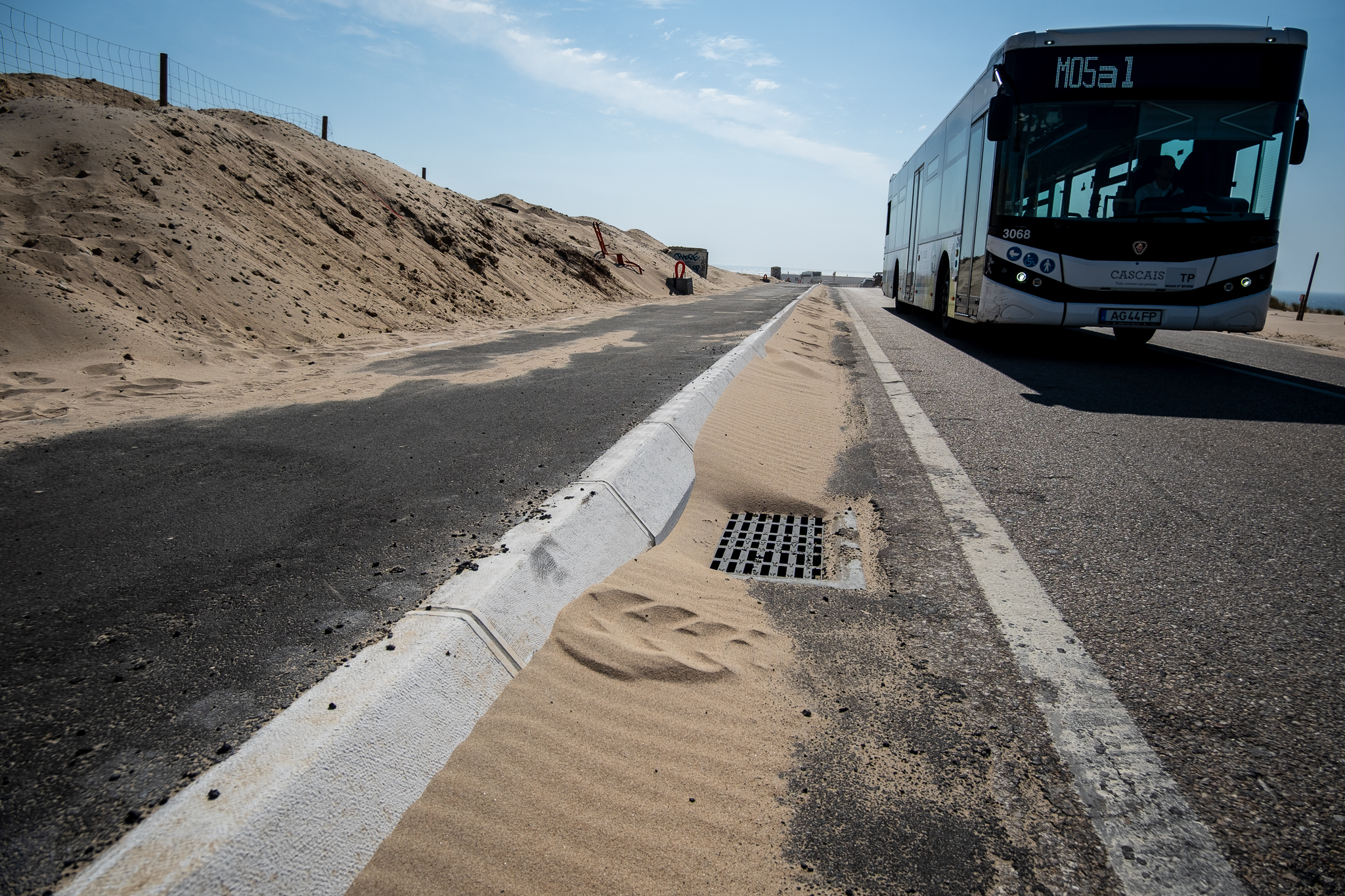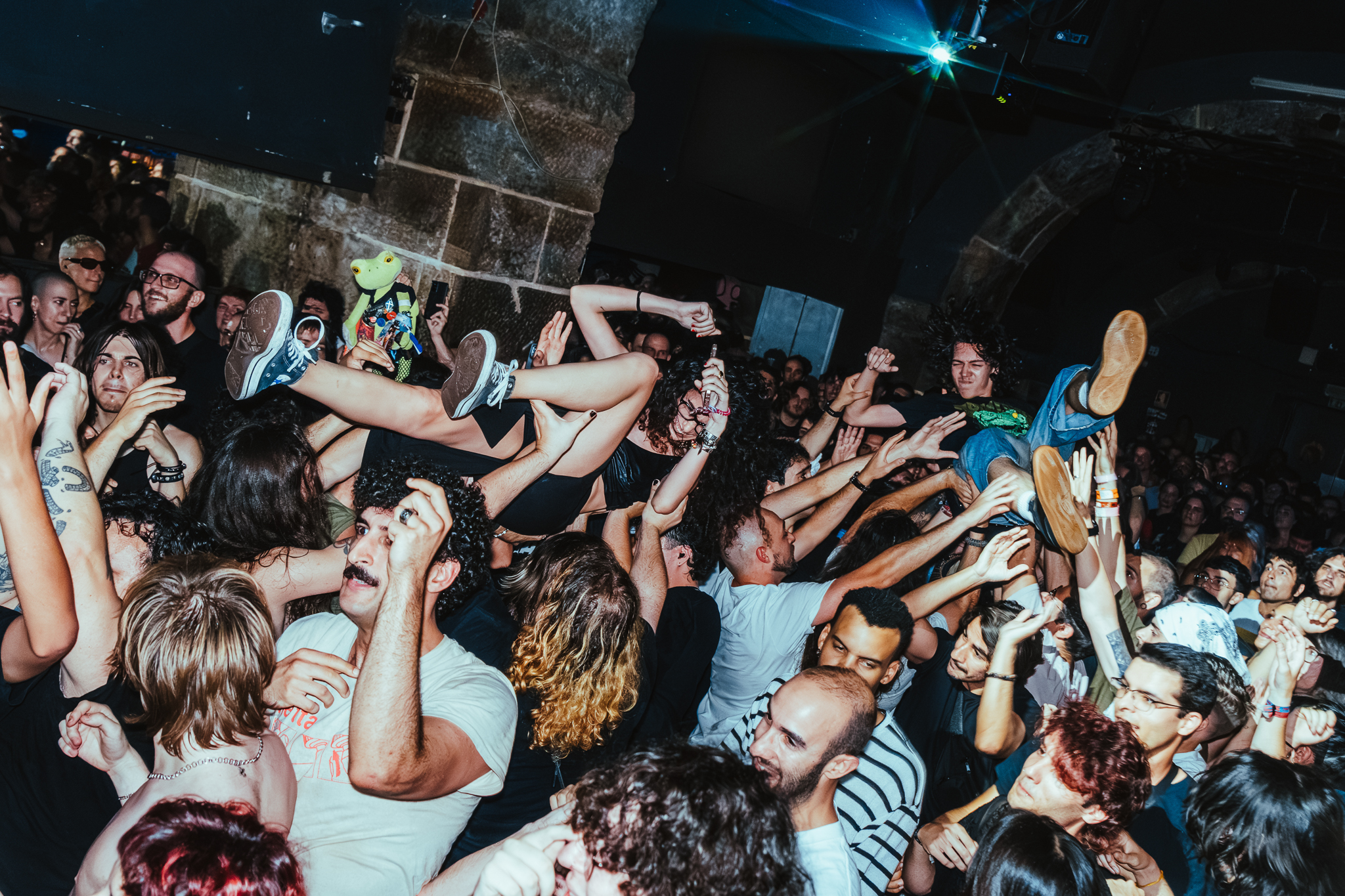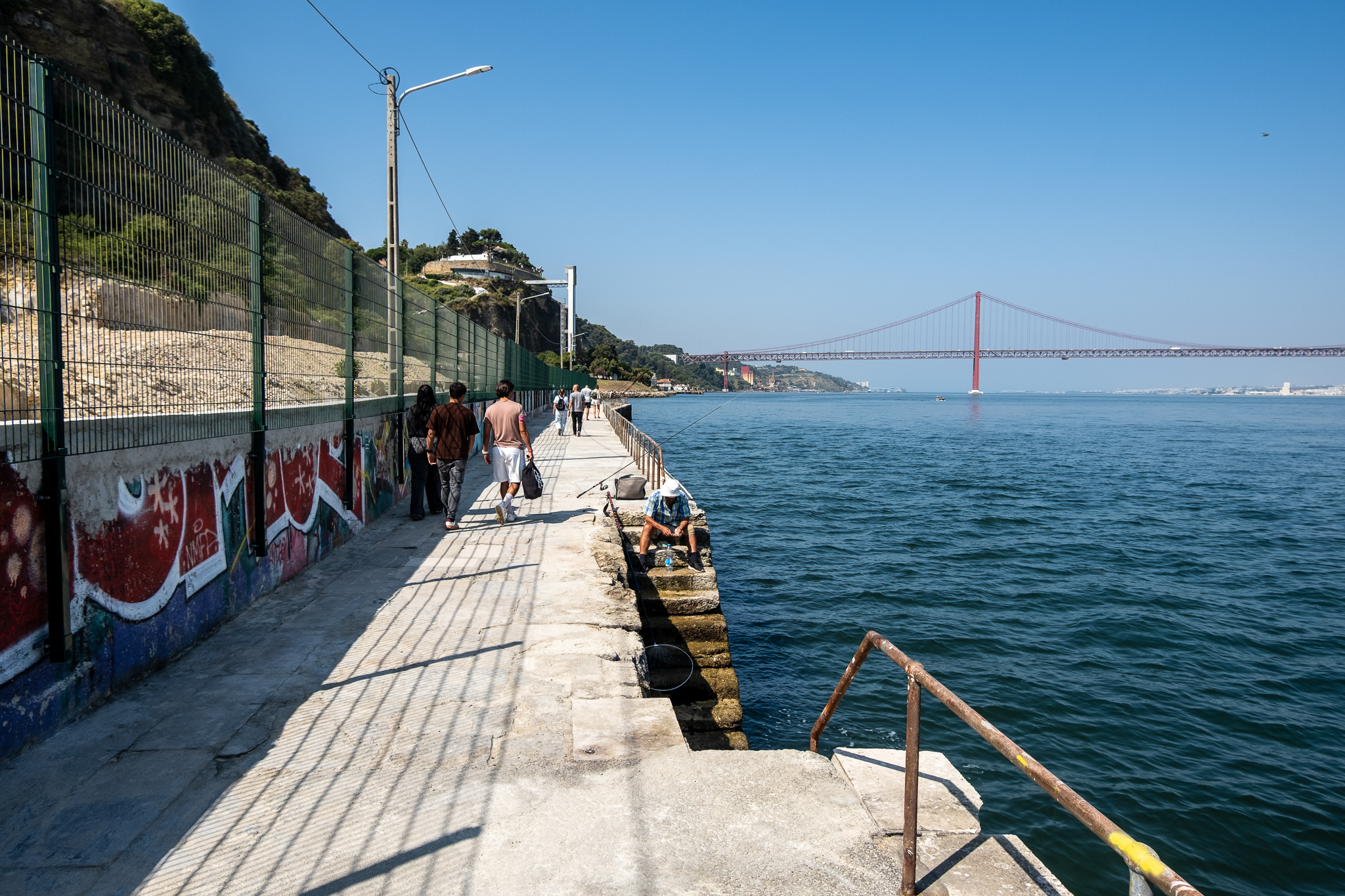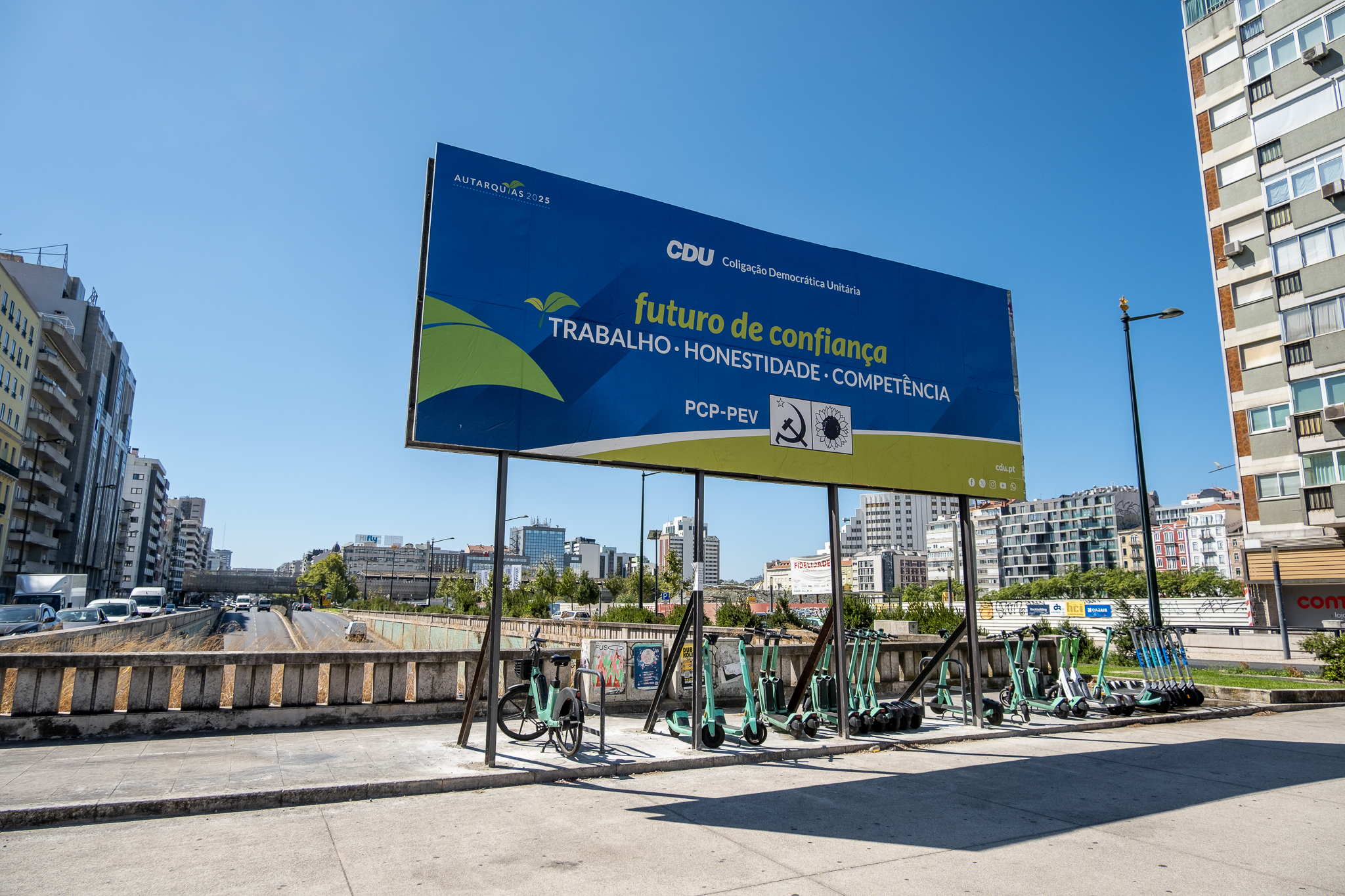
Sitting on the terrace of a café in Arroios Market, we could not contemplate the new urban art that marks the pedestrian space conquered around that dodecagonal building. Our view is blocked by a number of vans occupying the loading and unloading bays - even though they are apparently not doing any unloading. We notice that one of these vehicles is parked almost on top of a bench that occupies what was once a parking space - it narrowly missed damaging it.
Around the Arroios Market you feel the pressure of vans, cars..., vehicles in general. All on-street parking around the building has been reorganized to balance long-term priced spaces with loading and unloading pockets, quick-stop zones, and motorcycle parking. There are several bike racks and a bicycle rack is being installed. GIRA station with capacity for 10 shared bicycles. Two old parking spaces have been reconverted into areas where people can enjoy themselves, with tables, chairs, benches, flower beds and views of urban art - these are called parklets. The crosswalks became shorter and the five meters in front of them were blocked with bollards in order to increase the visibility of the pedestrian in the street.
In the street surrounding the Arroios Market, a series of local streets flow into it. Their intersections were redesigned with bollards, flower boxes, and some furniture that tactically reduces the curvature angles of vehicles and eliminates dead areas that used to be used for disorderly parking. The pedestrian has conquered, in this way, 1174 square meters to the car and artistic collective Boa Hora Estúdio was invited to decorate the new pedestrian space. His work, full of colors and characters, can already be appreciated on the first floor, but anyone who lives there or is lucky enough to have a drone can get another perspective. The photos we show were kindly provided by the photographer Francisco Calado:
The novelties in the public space did not go down well with merchants, who soon decided contest the changes and even ripped out some bollards. Making changes in a city sometimes implies cutting with paradigms we were used to. In the café where we sat, the owner spoke of the work as "a javardice", complaining about the parking lot at the door that he and his customers lost. Regrets verbalized despite the fact that, in one of the adjacent streets, the municipality has changed the configuration of spaces to increase the supply and that, a few meters away, in Praça do Chile, there is a parking lot with more than one hundred spaces. And the truth is that the intersections of the streets leading to the Market have never been parking spaces.
We got to the Market on foot and by subway - through the Alameda station because the Arroios station is not open again yet. We see a lot of people walking around. The Market is definitely prettier on the outside and there is more space to walk around. Now it will make sense to fix its interior, where, according to vendors and customers, it drips on rainy days.
